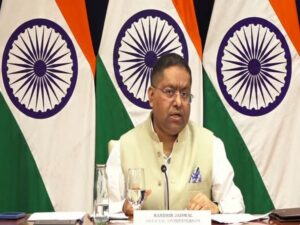Study provides evidence of effects of women empowerment on children weight, height
New Delhi, Aug 20 (PTI) When women are empowered, children are less likely to be underweight, researchers who studied several households in Odisha have claimed.
The study gathered data from more than 1,900 farming households from 12 districts in Odisha, home to some of India’s most vulnerable tribal groups,
The research was conducted by the Alliance of Bioversity International and the International Center for Tropical Agriculture (CIAT), Italy, which sought to gather field evidence of how women empowerment affects food security, and quality of diet and childhood. The findings were published in the journal PLoS ONE.
The researchers scored the women in these households using the Women’s Empowerment in Agriculture Index (WEAI), a measure that helps gauge their inclusion in agriculture.
The index quantifies such factors as women’s decision-making related to agricultural production and their control over how income was used in the household, among others. The index was co-launched in 2012 by the International Food Policy Research Institute (IFPRI), headquartered in Washington, DC.
The WEAI, based on individual-data but reported as an aggregate score at national or regional level, also measures women’s empowerment relative to that of the men in their households.
The researchers compared the WEAI score with varied aspects of the woman’s household such as the number of different foods and weight of children for their age.
The team also measured the height and weight of the children and discovered that women’s empowerment significantly increased children’s weight-for-age z-scores (WAZ), and weight-for-height z-scores (WHZ), but not their height-for-age z-scores (HAZ). Z-scores reveal how distant one’s individual score is from the average of the entire sample.
“The improvements in the z-scores contributed to reduced prevalence of underweight and wasting in children with mother’s with a higher empowerment score,” lead researcher Jonathan Mockshell, an agricultural economist at the Alliance of Bioversity International and CIAT, said.
“Overall, the results showed that women’s empowerment improved household dietary diversity, food consumption, and child anthropometry (reduced prevalence of underweight and wasting in children) among the vulnerable populations in Odisha, India,” the authors wrote.
India continues to be the largest contributor to global prevalence of hunger and malnutrition, resulting in a rising number of cases of children with conditions, such as anaemia, stunted growth, underweight and disability.
Multiple programmes aimed at women empowerment have been rolled out, including Mission Shakti by the state government and the Odisha Particularly Vulnerable Tribal Group Empowerment and Livelihoods Improvement Program (OPELIP), the authors said.
Owing to limited evidence of how women empowerment impacts on nutritional outcomes among vulnerable population groups, we conducted our study in the context of OPELIP, they said.
Future studies could provide additional insights in this regard using larger datasets, since the current study involved a relatively small number of respondents for data on child physical measurements like weight and height, Mockshell said.






